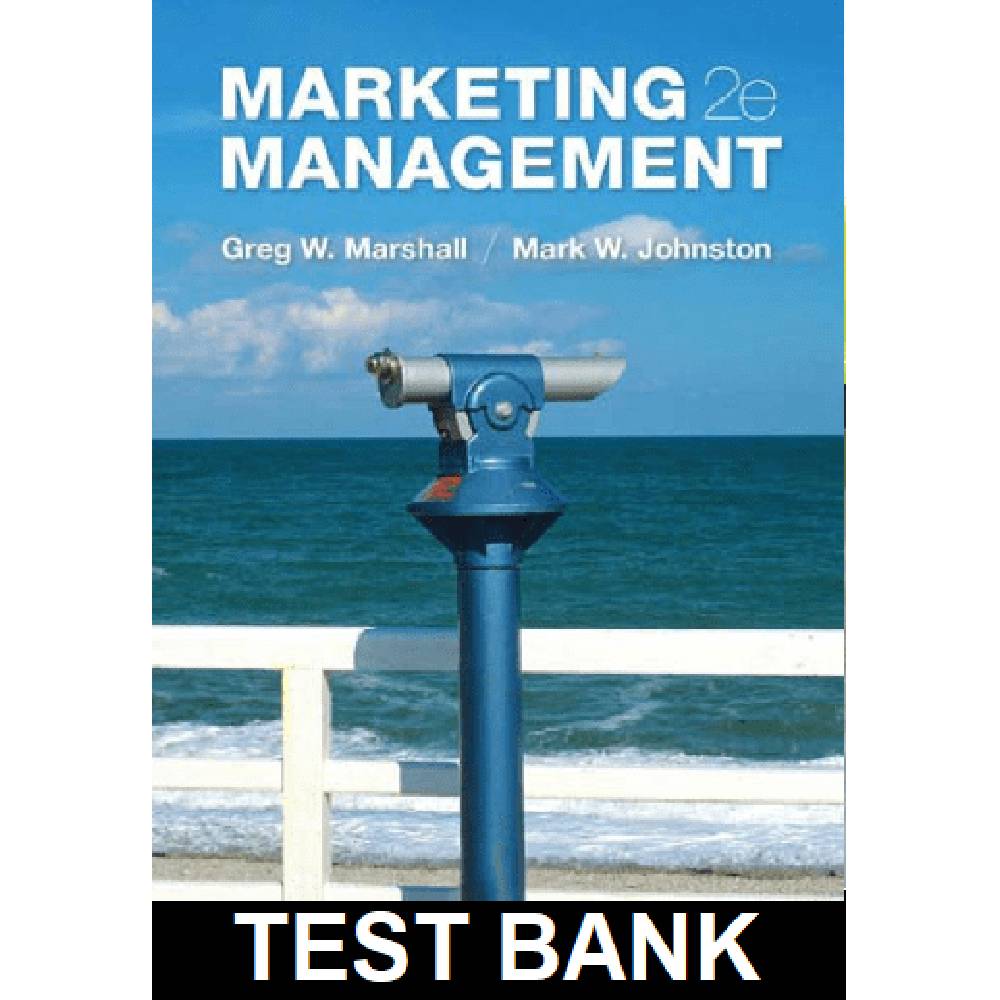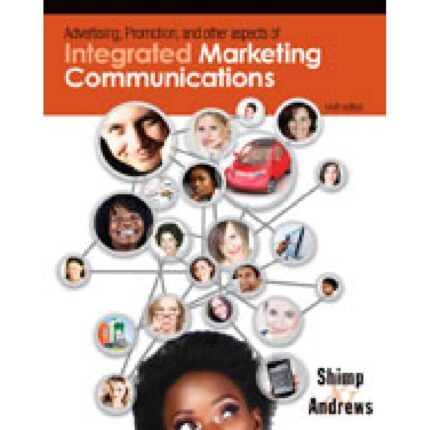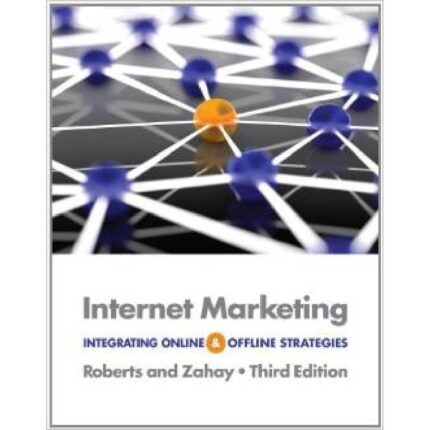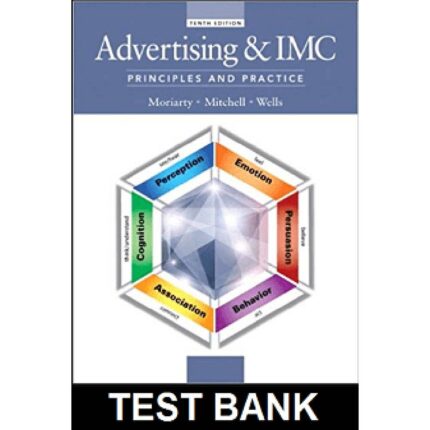Marketing Management 2nd Edition By Marshall – Test Bank
True / False Questions
1. The value chain portrays a mixture of primary and support activities utilized by an organization to design, produce, market, deliver, and support its products.
TRUE
The value chain portrays a synthesis of primary and support activities utilized by an organization to design, produce, market, deliver, and support its products (see Exhibit 11.1).
AACSB: Communication
Accessibility: Keyboard Navigation
Blooms: Remember
Difficulty: 1 Easy
Learning Objective: 11-01 Define a value network and how organizations operate within this approach.
Topic: The Value Chain and Value Networks
2. Many organizations are beginning to consider their customers—both end users and within a channel—as less important members of a value network.
FALSE
Many organizations are beginning to consider their customers—both end users and within a channel—as important members of a value network.
AACSB: Communication
Accessibility: Keyboard Navigation
Blooms: Remember
Difficulty: 1 Easy
Learning Objective: 11-01 Define a value network and how organizations operate within this approach.
Topic: The Value Chain and Value Networks
3. A channel is a system of interdependent relationships among a set of organizations that facilitates the exchange process.
TRUE
A channel of distribution consists of interdependent entities that are aligned for the purpose of transferring possession of a product from producer to consumer or business user. Put another way, a channel is a system of interdependent relationships among a set of organizations that facilitates the exchange process.
AACSB: Communication
Accessibility: Keyboard Navigation
Blooms: Remember
Difficulty: 1 Easy
Learning Objective: 11-02 Identify various types of intermediaries and distribution channels.
Topic: Channels and Intermediaries
4. In reality, cutting out intermediaries is always a guarantee of saving consumers money.
FALSE
Cutting out intermediaries is not a guarantee of saving consumers money. In the long run, channel intermediaries tend to continue to participate in a channel only as long as their value added to the channel supports their inclusion. If an intermediary of any of the types shown in Exhibit 11.3 doesn’t carry its weight, the channel structure eventually will change accordingly to maximize efficiencies across the utilities. Thus, channel members add their value by bridging gaps in form, time, place, and ownership that naturally exist between producers and consumers.
AACSB: Communication
Accessibility: Keyboard Navigation
Blooms: Remember
Difficulty: 1 Easy
Learning Objective: 11-02 Identify various types of intermediaries and distribution channels.
Topic: Channels and Intermediaries
5. Channel intermediaries enhance utilities by providing a wide array of specific functions.
TRUE
Channel intermediaries enhance utilities by providing a wide array of specific functions. Their contributions can be classified into physical distribution functions, transaction and communication functions, and facilitating functions.
AACSB: Communication
Accessibility: Keyboard Navigation
Blooms: Remember
Difficulty: 1 Easy
Learning Objective: 11-03 Understand the impact of intermediary contributions via physical distribution functions, transaction and communication functions, and facilitating functions.
Topic: Functions of Channel Intermediaries
6. Within a particular product category, the variety and assortment of products carried by retailers tends to be very similar.
FALSE
QVC expands the assortment available to its customers by offering a wider variety of products on its website.
AACSB: Communication
Accessibility: Keyboard Navigation
Blooms: Remember
Difficulty: 1 Easy
Learning Objective: 11-03 Understand the impact of intermediary contributions via physical distribution functions, transaction and communication functions, and facilitating functions.
Topic: Functions of Channel Intermediaries
7. The primary advantage of the television home shopping retail format is the ability to show and demonstrate the product.
TRUE
Dermot Boyd, CEO of QVC UK, said: “Mobile is the fastest growing platform and that includes tablets. But TV viewing has gone up too. The important thing is we can be on both screens: TV and tablets. Tablets and mobiles reinforce the TV platform, and we are streaming on the web too. Often, when people see something on QVC, it drives in-store sales of that product as well. And, through our website, QVC also allows brands to expand. At the end of the day, we’re a retailer too.”
AACSB: Communication
Accessibility: Keyboard Navigation
Blooms: Understand
Difficulty: 1 Easy
Learning Objective: 11-03 Understand the impact of intermediary contributions via physical distribution functions, transaction and communication functions, and facilitating functions.
8. While popular with consumers, vending machines are not particularly profitable.
TRUE
Although popular with consumers, vending machines are not necessarily the most popular form of non-store retailing. Rising costs in labor, gasoline, and maintenance, coupled with a very competitive environment that limits price increases, keeps margins low.
AACSB: Communication
Accessibility: Keyboard Navigation
Blooms: Remember
Difficulty: 2 Medium
Learning Objective: 11-09 Recognize the characteristics and types of non-store retailers.
Topic: Retailing
9. Unresolved channel conflict will never result in an uncooperative and inefficient channel, but it may impact end-user consumers through inferior products, spotty inventory, and higher prices.
FALSE
Ultimately, channel conflict can occur in which channel members experience disagreements and their relationship can become strained or fall apart. Unresolved channel conflict can result not only in an uncooperative and inefficient channel, but it can also ultimately impact end-user consumers through inferior products, spotty inventory, and higher prices.
AACSB: Communication
Accessibility: Keyboard Navigation
Blooms: Remember
Difficulty: 2 Medium
Learning Objective: 11-04 Explain the different types of vertical marketing systems.
Topic: Vertical Marketing Systems
10. Often, channel members adopt an approach of utilizing their unique competencies to influence others in the channel.
TRUE
Often, channel members adopt an approach of utilizing their unique competencies to influence others in the channel.













Reviews
There are no reviews yet.